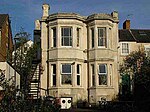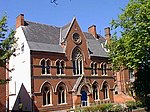The Nottingham Goose Fair is an annual travelling funfair held at the Forest Recreation Ground in Nottingham, England, during the first week of October. Largely provided by travelling showmen, it is one of three established fairs in the United Kingdom to carry the name, the others being the smaller Goosey Fair in Tavistock, Devon, and the even smaller Michaelmas Goose Fayre in Colyford, East Devon. In recent years, there have been more than 400,000 visitors to Nottingham's fair annually.Now known for its fairground rides and attractions, Goose Fair started as a livestock and trade event, with a reputation for its excellent cheese. The name "Goose Fair" is derived from the thousands of geese that were driven from the Lincolnshire fens in the East of England to be sold in Nottingham at the fair each year.In 1284, a royal charter was granted by King Edward I that referred to city fairs in Nottingham, although it is thought that a fair was already established in the city before then. Goose Fair was originally held for eight days starting on 21 September, but was moved to early October in 1752, when the Gregorian calendar was first adopted in Britain. For centuries, the fair was held in Nottingham's Old Market Square in the city centre, until it was moved to the Forest Recreation Ground in 1928, due to space limitations and planned redevelopment of the market square.Goose Fair was cancelled in 1646 after an outbreak of the bubonic plague, and again during the two World Wars of the 20th century. The fair was not held in 2020 because of the COVID-19 pandemic, and was cancelled in 2021 for the second year running, after plans for an entrance fee and perimeter fencing were rejected by the organisers. For 2022, as of March, negotiations were underway to extend the fair's normal five-day duration to ten days.











